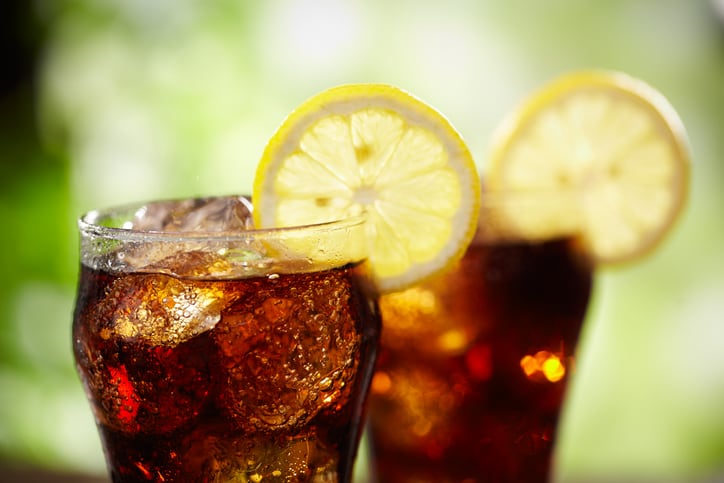Be clear on what you want from your innovation – and be prepared to be ‘super disciplined’ when ideas don’t work out.
What do you want your innovation to achieve?
Stripped down to its most simple definition, innovation is ‘anything new that creates value’, said John Murphy President & Chief Financial Officer, The Coca-Cola Company, speaking at the Redburn CEO Conference last month.
“When you take on that mindset, you have the opportunity to apply that kind of thinking into all aspects of the business. When it comes to the portfolio itself, it's really important to be clear as to what it is you're trying to accomplish? What is the role that you want innovation to play?”
That might sound simple – surely all new innovations are about driving sales and revenue? – but that’s not the case.
Take, for example, Coke Creations: an initiative launched by Coca-Cola last year to ‘bring a sense of intrigue and newness to a 136-year-old brand’ with its wacky flavors designed to pique the interest of Gen Z.
That's included the launch of 'intergalactic flavor' Coca-Cola Starlight and 'gaming-inspired' Coca-Cola Zero Sugar Byte - each accompanied by digital marketing campaigns and immersive digital experiences.
“Coke creations is not designed to be a massive volume add to the portfolio," explained Murphy. "It's designed to create new news. It's designed to attract and bring in new users into the Coke franchise.
“So I think it's really important to have clarity on the role of an innovation.”
The not-so glamorous skill of discipline
No one likes to admit failure – but good innovators need to.
Setting out a clear target for an innovation - or indeed, an established product - helps create clear parameters to measure its success.
Taking over the reins as CEO of Coca-Cola in 2017, James Quincey was quick to install a more ruthless approach to portfolio management with a mission to ‘kill the zombies’ – products that – for whatever reason – simply hadn't taken off. In 2021, it cut down its portfolio from 400 to 200 master brands.
That approach has now taken hold across the mentality of the business.
“In order to be successful at innovation, you've got to be super disciplined,” said Murphy. “And I think over the last number of years, we've elevated our own capabilities to drive much greater discipline around what gets into the pipeline in the first place and why. And then how do you take it through the pipeline and into the market.
“We have much more robust metrics to constantly evaluate the performance of the various innovations that we're driving. We look at the performance over multiple quarters now. We understand that for innovation – typically in innovation to have the probability of survival, it needs to be flourishing through the first few quarters. So we have a very, very clear understanding of what's working well and what's not."
"You don't get it right all the time. The failure rate in innovation is actually alarmingly high. And I think the name of the game for a company like ours is to have our batting average well ahead of the industry average. And we are advancing, we've had some really good progress.
"And yet, it's a game that demands constant invention and reinvention, constant understanding of what's happening in the marketplace."
Spray and pray?
In 2017, Coca-Cola set out its mission statement to be a ‘total beverage company’ – one that is not about soda, but about transforming the company to offer beverages across a range of categories.
But this should not be interpreted as a ‘anything and everything’ strategy – something the company has had to learn.
“One of the big lessons of the last few years on the pursuit to being a total beverage company is it does not mean you need to be in every category in every country. In fact, it's actually quite the opposite," said Murphy.
“You need to be able to marry that deep understanding of the consumer and where they are going, what they want, with the profit pools that that consumer journey creates."
To that end, it’s about researching what works well in what market; what can successfully scale... and what can’t.
Innovation case study: RTD alcohol
Coca-Cola launched its first ever RTD alcohol drink in 2018 with Lemon-Dou in Japan.
What's really catching the attention now, however, is products in the US and Europe such as Jack Daniel’s and Coca-Cola (in partnership with Brown-Forman), Topo Chico Hard Seltzer (in partnership with Molson Coors), and Fresca Mixed canned cocktails (in partnership with Constellation Brands).
So how is the company plotting out the next steps for this innovation?
“We're excited with the long term opportunity that's ahead, but one of the things that certainly I've learned over the years is that it takes a long time to build scale positions in new categories,” said Murphy. “And you've got to bring a degree of what I call impatient patience to the process.”
Partnerships are a key part of its RTD alcohol strategy: “It’s a feature, I think, of the category to be willing to think a little bit differently about how to create value."


